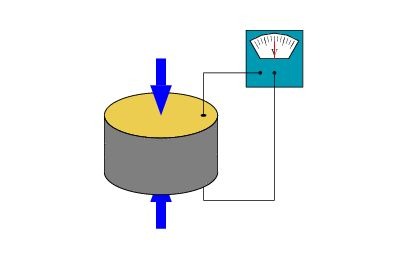A pressure sensor is a device for pressure measurement of gases or liquids. Pressure sensors can also be used to indirectly measure other variables such as fluid/gas flow, speed, water level, and altitude. Pressure sensors can alternatively be called pressure transducers, pressure transmitters, pressure senders, pressure indicators, piezometers and manometers, among other names. From Wikipedia : Pressure sensor

How does pressure sensor work ?
What is the pressure sensor principle ? “The pressure sensor forms a semiconductor deformation pressure on the surface of the sheet, and the sheet is deformed by an external force (pressure) to produce a piezoelectric impedance effect, so that the change in impedance is converted into an electrical signal.”
Pressure sensors are usually composed of pressure sensitive elements and signal processing units. According to different test pressure types, pressure sensors can be divided into gauge pressure sensors, differential pressure sensors and absolute pressure sensors.

In short, a pressure sensor converts pressure into a small electrical signal, which is sent and displayed. Therefore, these are also commonly referred to as pressure transmitters. They can give signals for analogy type, like 4 to 20 mA signals and 0 to 5 volt signals, also support digital signal output, like RS485, I2C etc.
Most pressure sensors work using the piezoelectric effect. This is when the material generates a charge in response to stress. This stress is usually compressive, but may be twisted, bent, or vibrated. Pressure sensors detect pressure and can determine the amount of pressure by measuring the charge.The pressure sensor needs to be calibrated in order to know what voltage or milliamp (mA) signal corresponds to what pressure. This is the basic “zero” and “span” calibration or minimum and maximum, which is a common job for maintenance personnel.
What common types of pressure can you measure with a pressure sensor?
We use three common types in the industry.
- The first is “gauge pressure”. Measured with reference to atmospheric pressure (typically 14.7 PSI). When above atmospheric pressure, you will display a “positive” pressure; when below atmospheric pressure, you will display a “negative” pressure.
- The next is “absolute pressure“. In short, this is the pressure relative to an absolute vacuum measurement. The absolute pressure of the full vacuum is zero PSIa and it increases from there. This type of sensor can be used if it is necessary to read pressures below atmospheric pressure.
- The last type that is usually monitored in the industry is “pressure differential”. It sounds like this, the difference between two pressures, a measured pressure and a reference pressure.
How to check pressure sensor ?
1. Turn on the power supply without applying pressure to test whether the zero output is normal; Long-term stability of the pressure sensor is ±0.1%FS/year (typical), ±0.2%FS/year (maximum)
2. Apply pressure to the sensor and turn on the power supply to test whether the output changes. Or check whether there is overload damage inside the sensor. PM420 pressure sensor overload pressure up to 2 times full scale. (Below 10MPa ≤ 2 times full scale10MPa and above ≤1.5 times full scale)
If the above checks are normal, the sensor is normal, otherwise the sensor is damaged!











